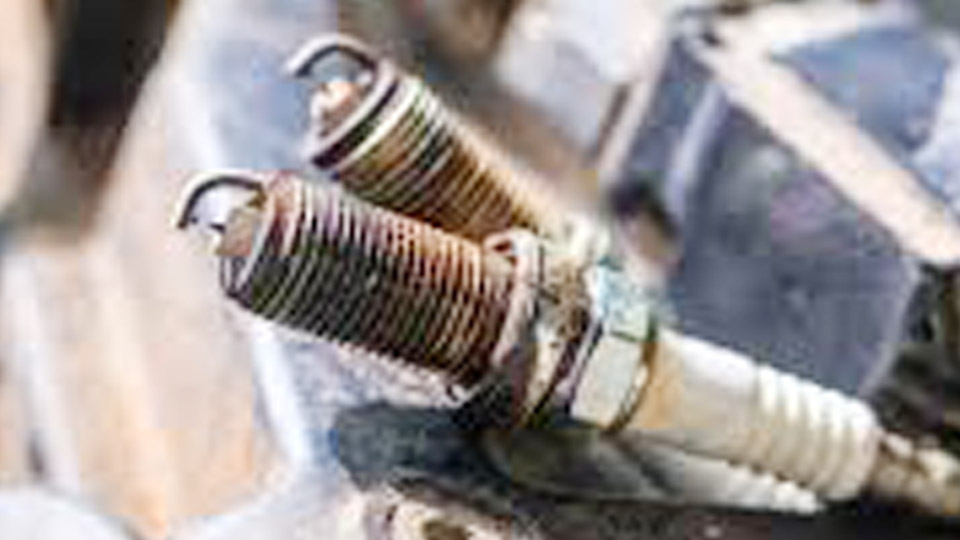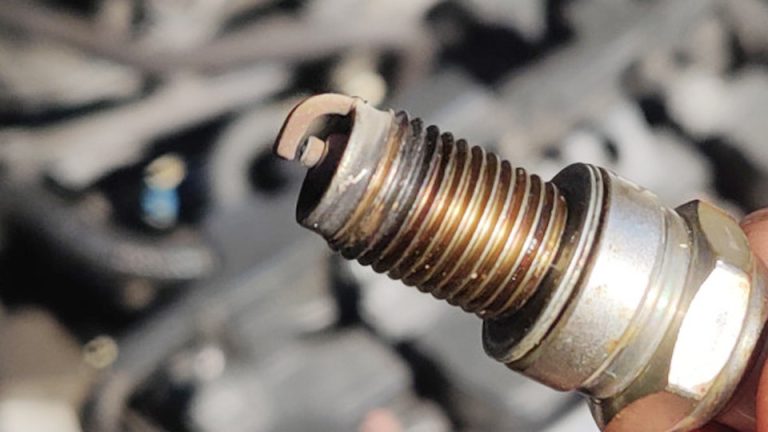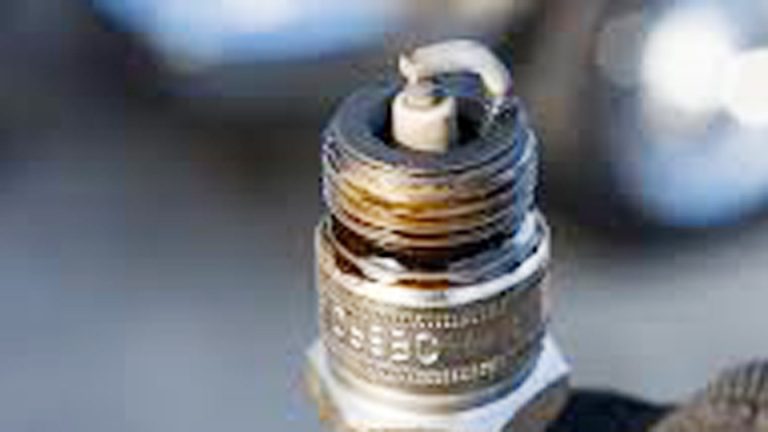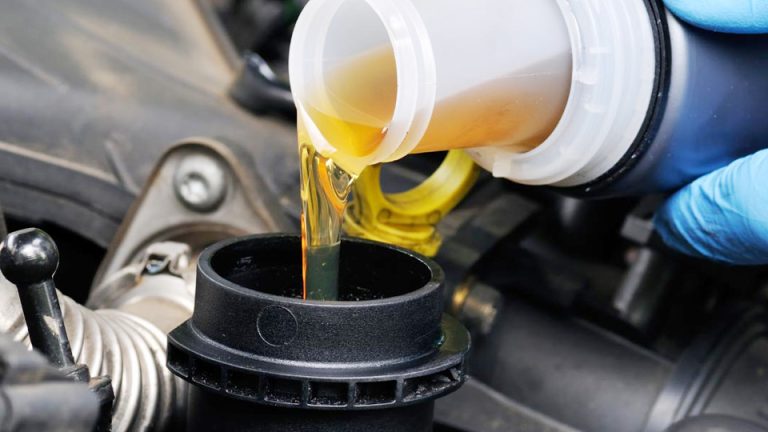Bad spark plugs can turn a simple drive into a real headache. They’re one of those parts most drivers forget about until the engine starts cranking forever, misfiring, or refusing to start at all. If you’ve ever found yourself stuck in the driveway wondering how to start a car with bad spark plugs, I can tell you—it’s not impossible, but it’s definitely not ideal. Weak or fouled plugs can’t create a strong enough spark to ignite the fuel-air mix, so the engine struggles to fire.
I’ve seen cars start with a little extra throttle, a fresh battery boost, or even after cleaning the plugs just enough to squeeze out a few more starts. Still, these are only temporary fixes. The real solution is swapping in new plugs, because running on bad ones can damage the ignition coils, catalytic converter, and even the engine over time.

Image by identifix
What Are Spark Plugs and Why Do They Matter?
What Spark Plugs Do
Spark plugs are the unsung heroes of your car’s ignition system. These small components sit in your engine’s cylinders, creating the spark that ignites the air-fuel mixture to power your vehicle. Without a strong, consistent spark, your engine won’t run smoothly—or at all. In my years working on everything from Honda Civics to Ford F-150s, I’ve seen how a single faulty spark plug can turn a reliable daily driver into a sputtering mess.
Why Spark Plugs Are Critical
Bad spark plugs don’t just make starting your car difficult; they can hurt your wallet and your vehicle’s longevity. A weak spark means incomplete combustion, which leads to:
- Poor fuel efficiency: You’re burning more gas than necessary.
- Reduced performance: Your car feels sluggish or hesitates during acceleration.
- Engine damage: Misfires can stress other components like the catalytic converter.
- Emissions issues: You might fail a smog test in states like California.
I once had a customer with a 2015 Chevy Malibu who ignored a misfire for months. By the time they rolled into the shop, their catalytic converter was toast, costing them over $1,200. A $10 spark plug could’ve saved them the headache.
Signs Your Spark Plugs Are Bad
Common Symptoms
If your car is struggling to start, it’s often a sign of bad spark plugs. Here’s what to look for:
- Hard starting or no start: The engine cranks but doesn’t fire up, or it takes multiple tries.
- Rough idling: Your car shakes or vibrates when stopped at a light.
- Misfires: You feel a stumble or jerk during acceleration.
- Poor fuel economy: You’re filling up more often without a clear reason.
- Check engine light: Codes like P0300 (random misfire) or P0301-P0308 (specific cylinder misfire) point to spark plug issues.
I’ve seen these symptoms countless times. Last summer, a buddy brought in his 2008 Toyota Camry because it was “acting weird.” A quick scan showed a P0302 code (misfire in cylinder 2), and sure enough, the spark plug was fouled with carbon buildup.
How to Diagnose Bad Spark Plugs
To confirm spark plugs are the issue, grab a few tools and get hands-on:
Visual Inspection: Remove the spark plug (more on this later) and check for wear, fouling, or damage. Black soot, oil, or a worn electrode are red flags.
Use an OBD-II Scanner: Plug in a scanner to read misfire codes. I use a BlueDriver scanner—it’s affordable and works with your phone.
Test for Spark: With the plug out, reconnect it to the ignition coil, ground it against the engine block, and crank the engine. A strong blue spark is good; a weak or no spark means trouble.
If you’re not sure, take it to a shop. Most will diagnose for free if you let them do the repair.
Can You Start a Car with Bad Spark Plugs?
Is It Possible?
Yes, you might start a car with bad spark plugs, but it depends on how bad they are. If one plug is fouled or weak, the engine may still run, just poorly. If multiple plugs are shot, starting becomes nearly impossible. I’ve seen cars limp along with a single bad plug, but it’s like driving with a limp—do it too long, and you’re asking for trouble.
Temporary Fixes to Start Your Car
If you’re stranded and suspect bad spark plugs, here are a few tricks I’ve used in a pinch:
Clean the Plug: Remove the spark plug, clean it with a wire brush, and check the gap with a feeler gauge (more on gaps later). This might buy you time to get home.
Check Connections: Loose or corroded ignition coil connections can mimic bad plugs. Wiggle the coil or wire to ensure a tight fit.
Use Starting Fluid: A small shot of starting fluid into the air intake can help ignite the mixture if the spark is weak. Be careful—this is a last resort.
I once helped a neighbor start their 2010 Dodge Charger with a fouled plug by cleaning it with brake cleaner and a brush. It got them to the shop, but the plug was replaced the next day.
Why It’s Not a Long-Term Solution
Starting a car with bad spark plugs is a band-aid. You’re risking engine damage, poor fuel economy, and a breakdown at the worst possible moment. Replace them ASAP.
When and Why to Replace Spark Plugs
When to Replace
Most manufacturers recommend replacing spark plugs every 30,000 to 100,000 miles, depending on the type:
- Copper plugs: 30,000–50,000 miles (common in older vehicles).
- Platinum plugs: 60,000–100,000 miles (found in many modern cars).
- Iridium plugs: Up to 120,000 miles (used in high-performance or newer models).
Check your owner’s manual for specifics. For example, my 2016 Subaru Outback calls for iridium plugs every 60,000 miles, but I swap them at 50,000 because I drive hard in stop-and-go traffic.
Why Replacement Is Necessary
Bad spark plugs don’t just make starting hard—they stress your engine. Incomplete combustion can damage pistons, rings, or the catalytic converter. Plus, you’re wasting gas and polluting more. Replacing them is a cheap fix compared to a $2,000 engine repair.
OEM vs Aftermarket Spark Plugs: Which Is Better?
OEM Spark Plugs
OEM (Original Equipment Manufacturer) spark plugs are made by the same company that built your car’s plugs, like NGK for Toyota or Bosch for BMW. They’re designed to match your engine’s specs exactly.
Pros:
- Guaranteed compatibility with your vehicle.
- Often longer-lasting (especially platinum or iridium OEM plugs).
- Backed by manufacturer warranties.
Cons:
- More expensive (often $10–$25 per plug).
- Limited availability at some auto parts stores.
Aftermarket Spark Plugs
Aftermarket brands like NGK, Denso, Bosch, or Champion offer alternatives that are often cheaper and widely available.
Pros:
- Lower cost ($5–$15 per plug).
- Widely available at stores like AutoZone or O’Reilly.
- Some brands (e.g., NGK G-Power) offer performance upgrades.
Cons:
- Quality varies by brand.
- Risk of fakes or poor fitment if you buy from shady sources.
OEM vs Aftermarket Spark Plugs
| Feature | OEM Spark Plugs | Aftermarket Spark Plugs |
|---|---|---|
| Price (per plug) | $10–$25 | $5–$15 |
| Compatibility | Perfect fit | Good, but varies by brand |
| Durability | High (60,000–120,000 miles) | Varies (30,000–100,000 miles) |
| Availability | Dealerships, some stores | Auto parts stores, online |
| Warranty | Often 1–2 years | Varies by brand |
My Recommendation
For most cars, I stick with OEM plugs for reliability, especially for newer vehicles under warranty. For older cars or budget builds, NGK or Denso aftermarket plugs are solid. I put NGK iridiums in my 2003 Ford Mustang GT, and it’s been running smoother than ever for 40,000 miles.
How to Replace Spark Plugs: A Step-by-Step Guide
Tools You’ll Need
- Ratchet and spark plug socket (3/8-inch drive, usually 5/8 or 13/16 inch).
- Torque wrench (for precise tightening).
- Feeler gauge or spark plug gap tool.
- Anti-seize compound (optional but recommended).
- Dielectric grease (for coil connections).
- Extension bar and swivel joint (for tight spaces).
Step-by-Step Replacement
Here’s how I replace spark plugs in most vehicles, based on years in the shop:
Prepare the Car: Park on a flat surface, let the engine cool, and disconnect the battery to avoid shocks.
Locate the Plugs: Find the spark plugs (usually under ignition coils or wires). On a V6 or V8, you’ll need to access both sides of the engine.
Remove the Old Plug: Use a spark plug socket and ratchet to gently loosen and remove the plug. If it’s stuck, don’t force it—spray penetrating oil and wait 10 minutes.
Check the Gap: New plugs should be pre-gapped, but verify with a feeler gauge (check your manual for the correct gap, usually 0.028–0.060 inches).
Apply Anti-Seize: Dab a thin layer of anti-seize on the plug threads to prevent seizing (skip this for some OEM plugs—check the manual).
Install the New Plug: Hand-thread the plug to avoid cross-threading, then torque to spec (usually 10–20 ft-lbs for most cars).
Reconnect Everything: Reattach the ignition coil or wire, apply dielectric grease to the connection, and reconnect the battery.
Test the Engine: Start the car and listen for smooth idling. Check for misfire codes with a scanner.
Common Mistakes to Avoid
- Cross-threading: Always hand-thread plugs to avoid damaging the cylinder head.
- Over-tightening: Use a torque wrench to prevent cracking the plug or head.
- Mixing Plugs: Don’t mix brands or types (e.g., copper and iridium) in the same engine.
- Ignoring Coils: Bad ignition coils can mimic bad plugs. Test them if misfires persist.
I learned the hard way about cross-threading when I rushed a job on a 2005 Honda Accord. Stripped the threads and had to re-tap the head—a $200 mistake.
How to Spot Fake Spark Plugs
Counterfeit spark plugs are a real problem, especially when buying online. I once got a batch of “NGK” plugs from a sketchy eBay seller that were clearly knockoffs. Here’s how to spot fakes:
Packaging: Genuine plugs from NGK, Denso, or Bosch have high-quality boxes with clear logos and holograms.
Electrode Quality: Real plugs have clean, precise electrodes. Fakes often have sloppy welds or uneven gaps.
Price: If it’s too cheap (e.g., $2 for an iridium plug), it’s likely fake.
Source: Buy from reputable retailers like AutoZone, Advance Auto Parts, or directly from the manufacturer.
Stick to trusted sources, and you’ll avoid headaches. I always double-check part numbers against my vehicle’s manual to be sure.
Maintenance Tips for Spark Plugs
Extending Spark Plug Life
- Use the Right Fuel: Low-quality gas can foul plugs faster. Stick to the octane rating in your manual.
- Regular Inspections: Check plugs every 20,000 miles or during oil changes.
- Clean Engine: Oil leaks or rich fuel mixtures can foul plugs. Fix leaks and tune your engine.
- Replace Coils/Wires: Worn ignition coils or wires can overwork plugs, causing early failure.
Safety Tips
- Work on a cool engine to avoid burns.
- Wear gloves to keep oil and dirt off new plugs.
- Double-check torque specs to avoid damaging the engine.
US Market-Specific Spark Plug Options
In the US, you’ve got plenty of choices at stores like AutoZone, O’Reilly, or Amazon. Here are some popular options for common vehicles:
- Toyota Camry (2010–2020): NGK Iridium IX ($12–$15 each).
- Ford F-150 (2015–2023): Motorcraft Platinum ($10–$12 each).
- Honda Civic (2006–2015): Denso Platinum TT ($8–$10 each).
- Chevy Silverado (2014–2023): AC Delco Iridium ($15–$20 each).
Check your vehicle’s manual for the exact part number. For example, my Subaru takes NGK SILZKAR7B11 plugs, and I’ve seen them at NAPA for $14 each.
Conclusion
Bad spark plugs can turn a reliable car into a frustrating one, but with the right knowledge, you can diagnose, start, and fix the issue like a pro. Whether you’re limping along with a fouled plug or replacing all of them, prioritize quality parts and proper installation.
OEM plugs are my go-to for most modern cars, but trusted aftermarket brands like NGK or Denso are great for budget builds. Always double-check your gaps, torque to spec, and buy from reputable sources to avoid fakes.
FAQ: Common Spark Plug Questions
How Do I Know If My Spark Plugs Are Bad?
Look for hard starting, rough idling, misfires, or poor gas mileage. Use an OBD-II scanner to check for codes like P0300 or P0301. Inspect the plugs for fouling, oil, or wear.
Can I Drive with Bad Spark Plugs?
You might, but it’s risky. Bad plugs can damage your engine or catalytic converter. Replace them ASAP to avoid costly repairs.
How Often Should I Replace Spark Plugs?
Every 30,000–120,000 miles, depending on the type (copper, platinum, or iridium). Check your owner’s manual for your vehicle’s schedule.
Are Expensive Spark Plugs Worth It?
Iridium or platinum plugs last longer and perform better, especially in modern engines. For older cars, copper plugs are fine if you’re on a budget.
How Can I Tell If a Spark Plug Is Fake?
Check the packaging, electrode quality, and price. Buy from trusted retailers like AutoZone or directly from manufacturers like NGK or Bosch.



